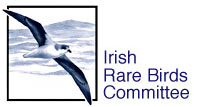Recording rare or scarce species in BirdTrack
If you record a species that is rarely encountered within a bird recording area, BirdTrack will prompt you to supply a description so that the local recorder / records committee can assess the evidence that supports the identification.
Normally all that's required is a description of the diagnostic features which were used to establish the bird's identity, addressing the following questions:
- What was its overall size and shape (compared to other birds), including the size and shape of its bill?
- What colours and patterns were the plumage on the head, back, tail, wings and underparts?
- What behaviour did you see, i.e. what was it doing?
- Why did you think it was the species claimed and not something more common?
Brief notes about the circumstances of the observation can be included. Photographs and/or sound recordings of the bird(s) being described are very useful too, if available.
Lists of species for which a description is required are usually given in the local bird report and/or the relevant bird club website. Local rarities are typically species that are less than annual in a recording area; many are also species that can easily be confused with a more common relative.
Note that if you 'twitched' the bird (i.e. someone else found it and you went to look at it), it is not usually necessary to complete a description - that responsibility typically lies with the finder. Likewise, if you are adding historical records of rare species that were submitted to, and accepted by, the relevant rarities committee at the time, there's no need to write a description. You can circumvent the local rarity description form by clicking the 'BirdTrack Home' button underneath it.
Rare birds
Britain

Species which are rarely recorded in Britain require a description to be submitted to the British Birds Rarities Committee (BBRC). The committee is made up of 10 voting members and a non-voting secretary who serve for a fixed term. They assess records of species, and some distinctive sub-species, which rarely occur in Britain.
Descriptions can be submitted to the BBRC via the online form on their Submit a sighting page. Alternatively, downloadable Microsoft Word / PDF versions are available.
- If you use one of the offline versions, please email the completed form to the BBRC Secretary at secretary@bbrc.org.uk, copied to the relevant county bird recorder.
Ireland
Rare birds seen in Ireland are assessed by the Irish Rare Birds Committee (IRBC). The IRBC is responsible for maintaining a list of the birds recorded in Ireland (Republic). Its primary function is the assessment of records of certain rare and scarce species.
Descriptions of species on the IRBC list can be submitted via email or post:
- Full details of how to submit records to the IRBC can be found here.
- Descriptions of rare birds seen in Northern Ireland should be sent to George Gordon, 2 Brooklyn Avenue, Bangor, Co. Down, BT20 5RB.
Scarce birds
- For more information about recording scarce species to BirdTrack, you can view our Scarce birds in BirdTrack page.
England and Wales
Most county bird reports produce their own list of scarce species requiring a description at the county level. This will vary considerably between counties. Please check the local bird club website or the latest local bird report to find out which species require descriptions in particular areas.
Scotland
In Scotland, the Scottish Birds Records Committee (SBRC) assesses all records of birds which are rare in Scottish terms. It has seven voting members and a non-voting secretary and at least six members must vote in favour of a record for it to be accepted. Descriptions should be submitted to SBRC via your county recorder.
The species dealt with via the SBRC are additional to those on the BBRC list (for which Scottish records would be reviewed by the BBRC in the usual way). The following link lists species currently requiring a description if recorded in Scotland.
Ireland
Records of scarce birds in Ireland should be sent to the relevant area recorder. If in doubt send records to Birdwatch Ireland, P.O. Box 12, Greystones, Co. Wicklow.
